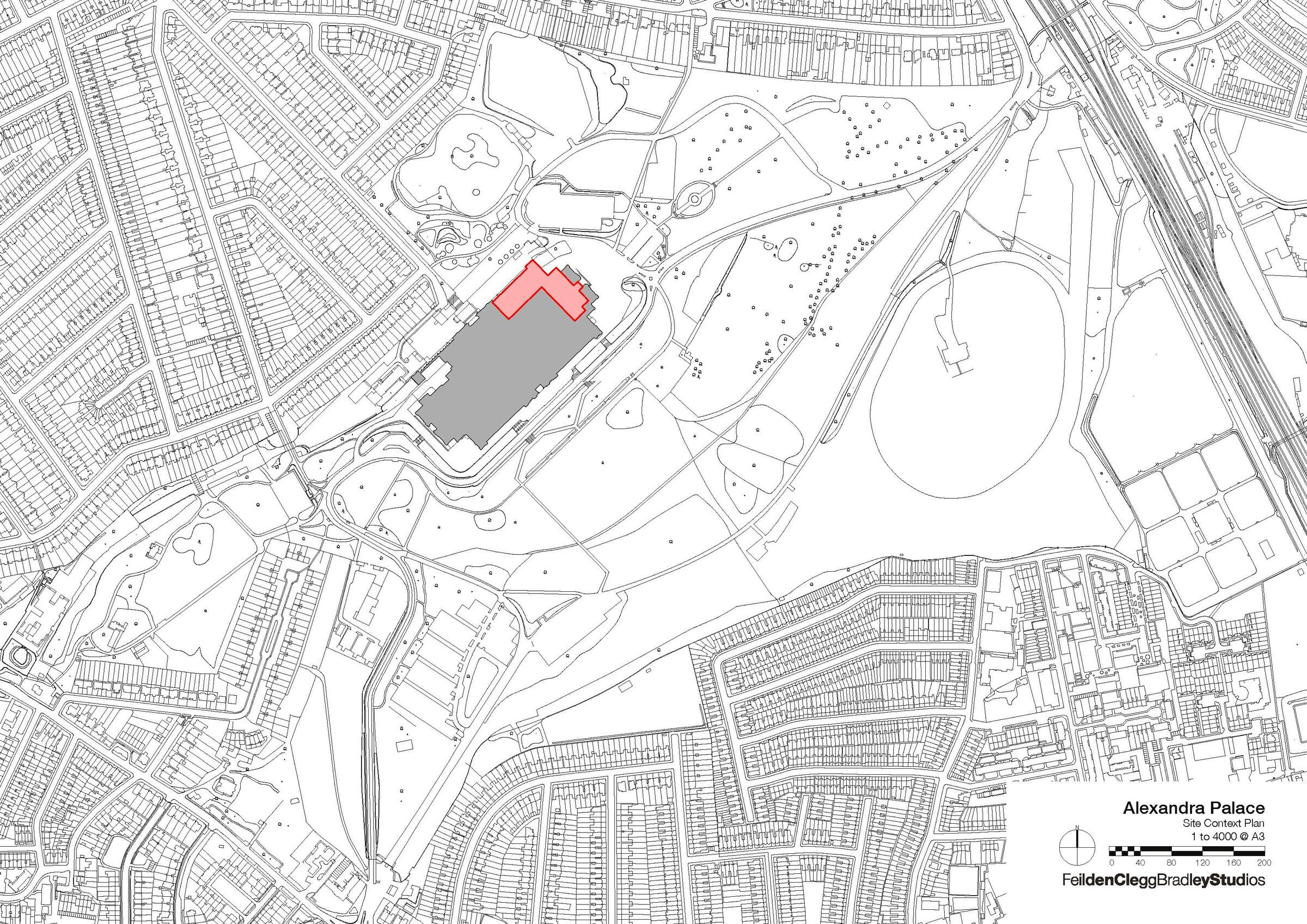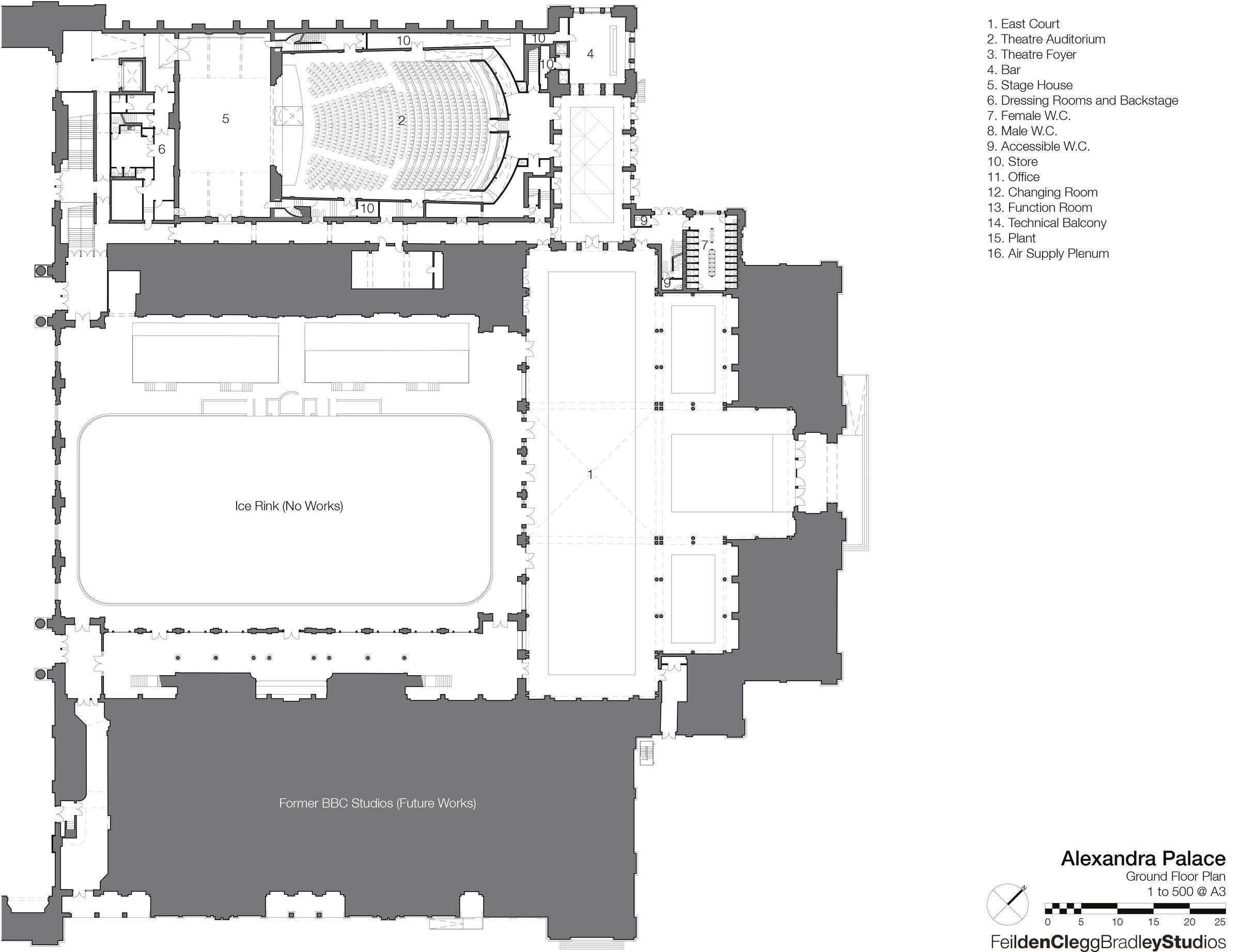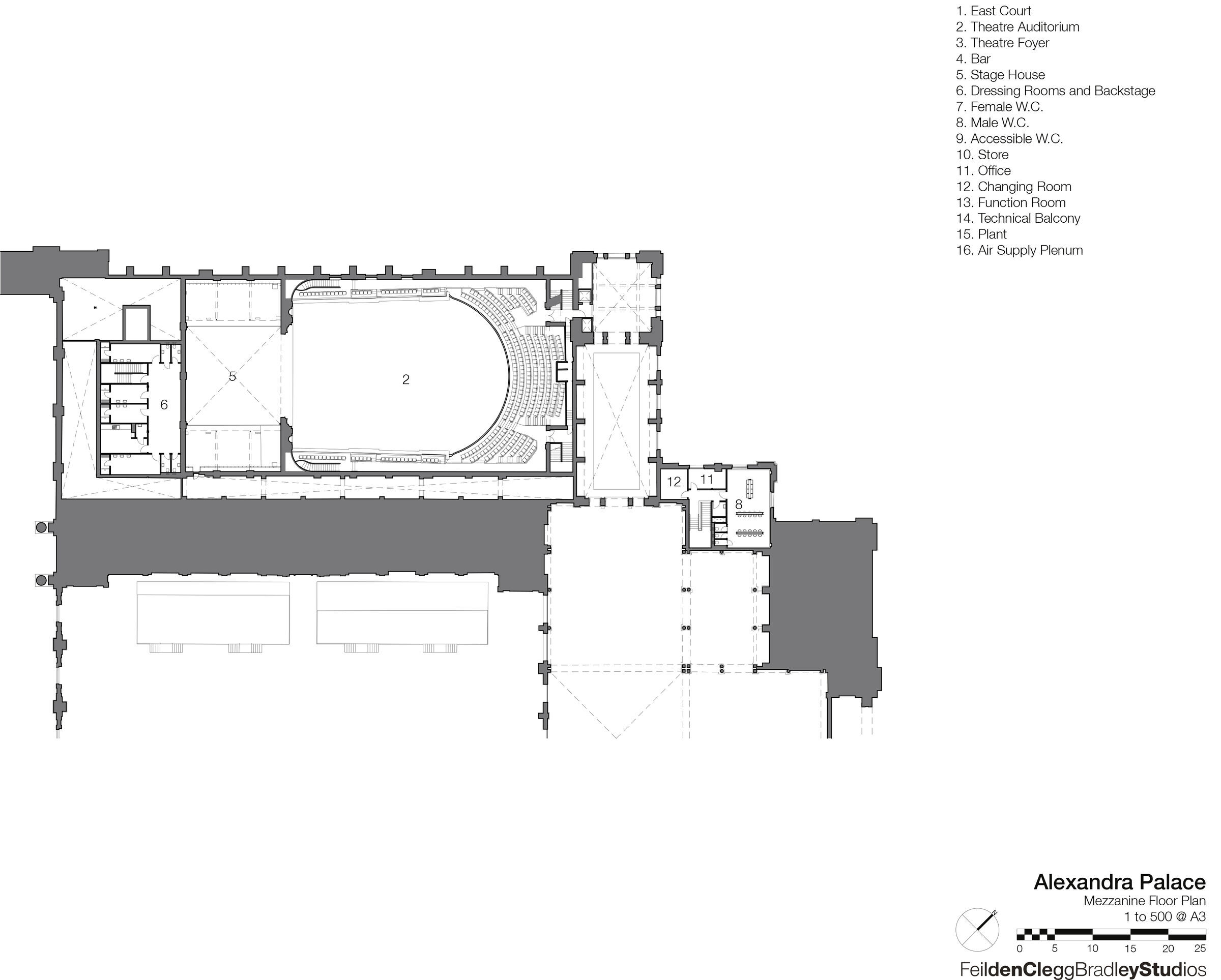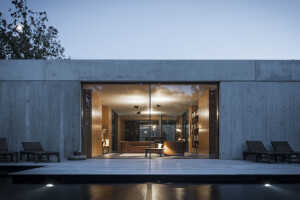The regeneration of the East Wing of the 'people’s palace' has breathed new life into a much-loved cultural icon, integrating a new technical infrastructure while retaining the unique character of its historic spaces.
The theatre at Alexandra Palace, reopened in December last year after eighty years of darkness, is described as “London’s oldest new theatre”.
Conceived as a place for the entertainment and enlightenment of London’s burgeoning population in the latter half of the nineteenth century, Alexandra Palace was a speculative project on a grand scale. Initially successful, audiences for its theatre soon dwindled. Since then the space has served as a cinema and, during the First World War, as a chapel and hospital. When the BBC occupied the East Wing of the Palace from 1936 - inaugurating the world’s first scheduled television broadcast – the theatre became their props store and scenery workshop. Finally, for 30 years, the space lay abandoned and almost forgotten.
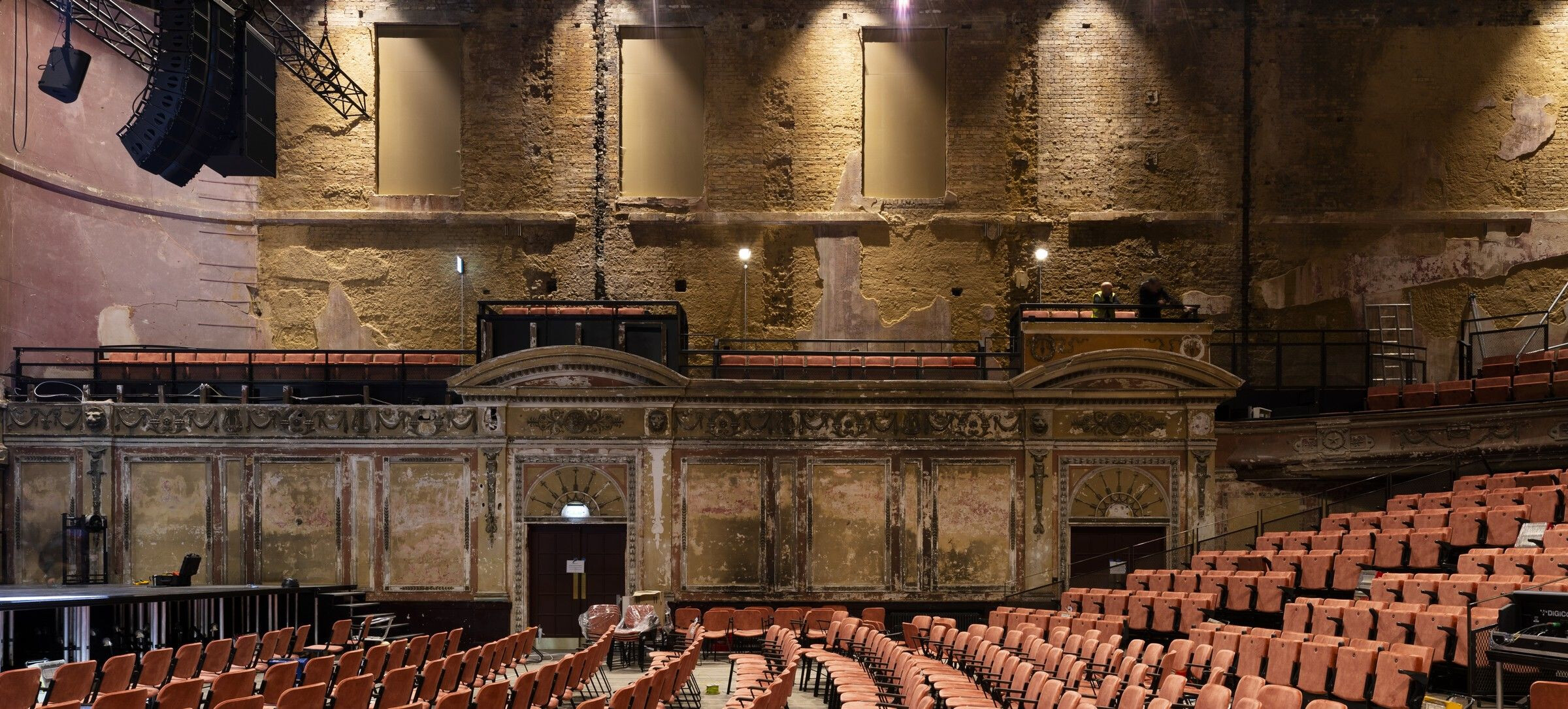
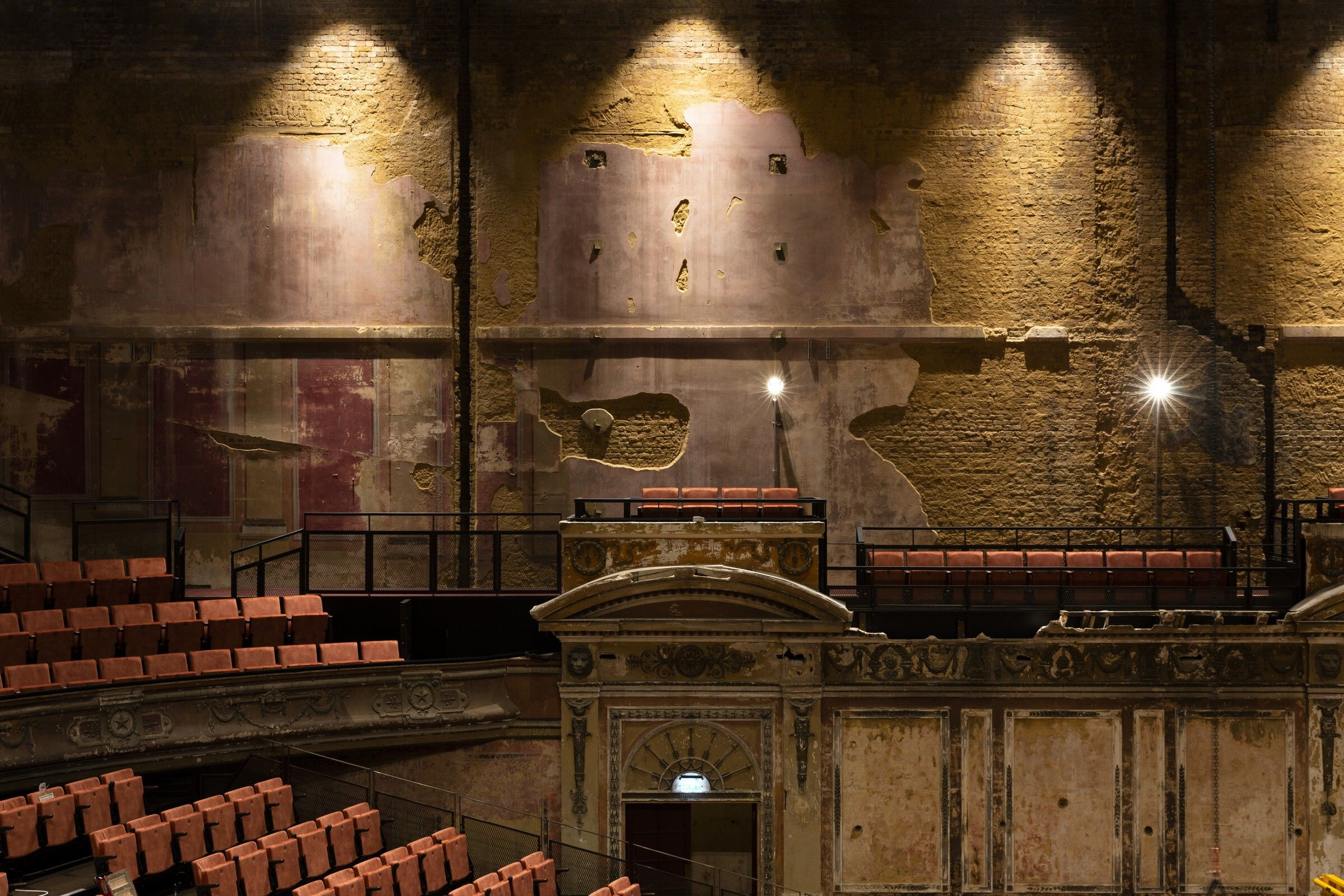
This eventful history is legible on the surfaces and in the fabric of the building – a short period of grandeur overlaid with decades of alteration, damage and slow decay. All of this is integral to the atmosphere, the character and the story of this space. The past is suddenly tangible. To bring the theatre back to life some far-reaching alterations have been necessary, but of paramount importance was the preservation of the evocative and layered character that made this space unique – a fragile quality that could have been destroyed by well-meaning repair.
Almost invisibly, a great deal of engineering work has been undertaken. The theatre’s sloping floor has been replaced with a new, level one. This enables performances to be drawn out from the stage into the auditorium itself in contemporary formats never conceived by its Victorian designers. The original timber boards were carefully numbered, lifted and reinstated. Immediately above the circle balcony an entirely new balcony structure was inserted to a much steeper rake, improving sightlines into the middle of the auditorium. The result is a sense of intimacy that’s surprising for such a large space.

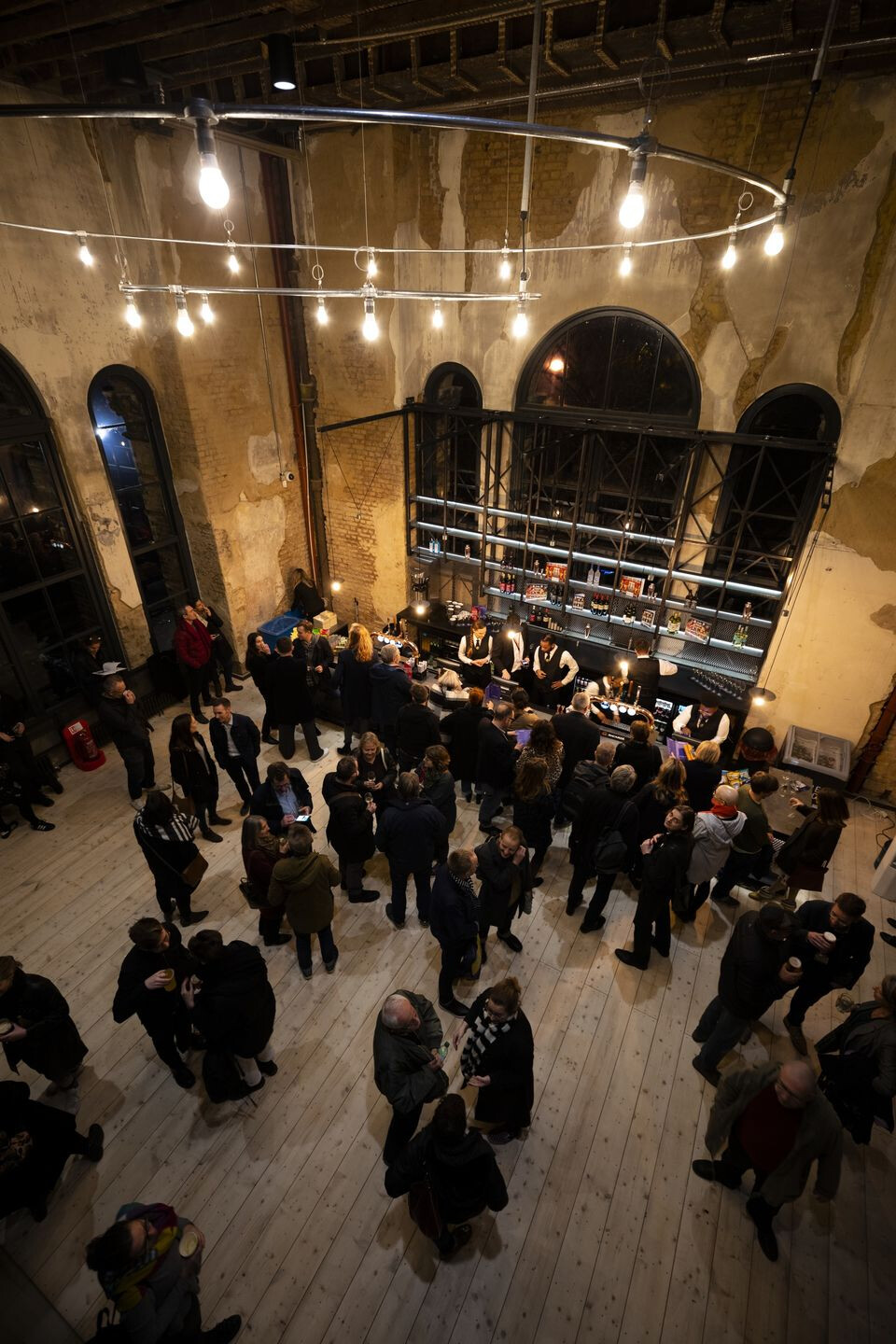
Above this voluminous room, the roof structure has been re-engineered to support a grid of 64 rigging points which carry the lighting, scenery and audio equipment necessary for modern productions. These extensive works, however, are masked by the elaborate plasterwork ceiling. Found to be in very fragile condition, it has been conserved and consolidated from above but, where pieces were missing or damaged, they have not been restored. As with other historic surfaces, the ceiling is treated and presented “as found”; as an artefact that tells of the opulence, decay and rebirth of the theatre.
The East Court, a vaulted, glazed exhibition hall with a scale and character reminiscent of Victorian railway engineering, has been brought back to life as an extremely generous foyer space for the theatre which, during the daytime, serves as the public face of Alexandra Palace. Seen as an extension of the park, it is freely open to all as a welcoming place to stop for a coffee, and to learn about the people and events that make up the palace’s extraordinary history. A striking addition here is a new floor, painted as a 1000m² graphic installation by artists, Art + Believe.
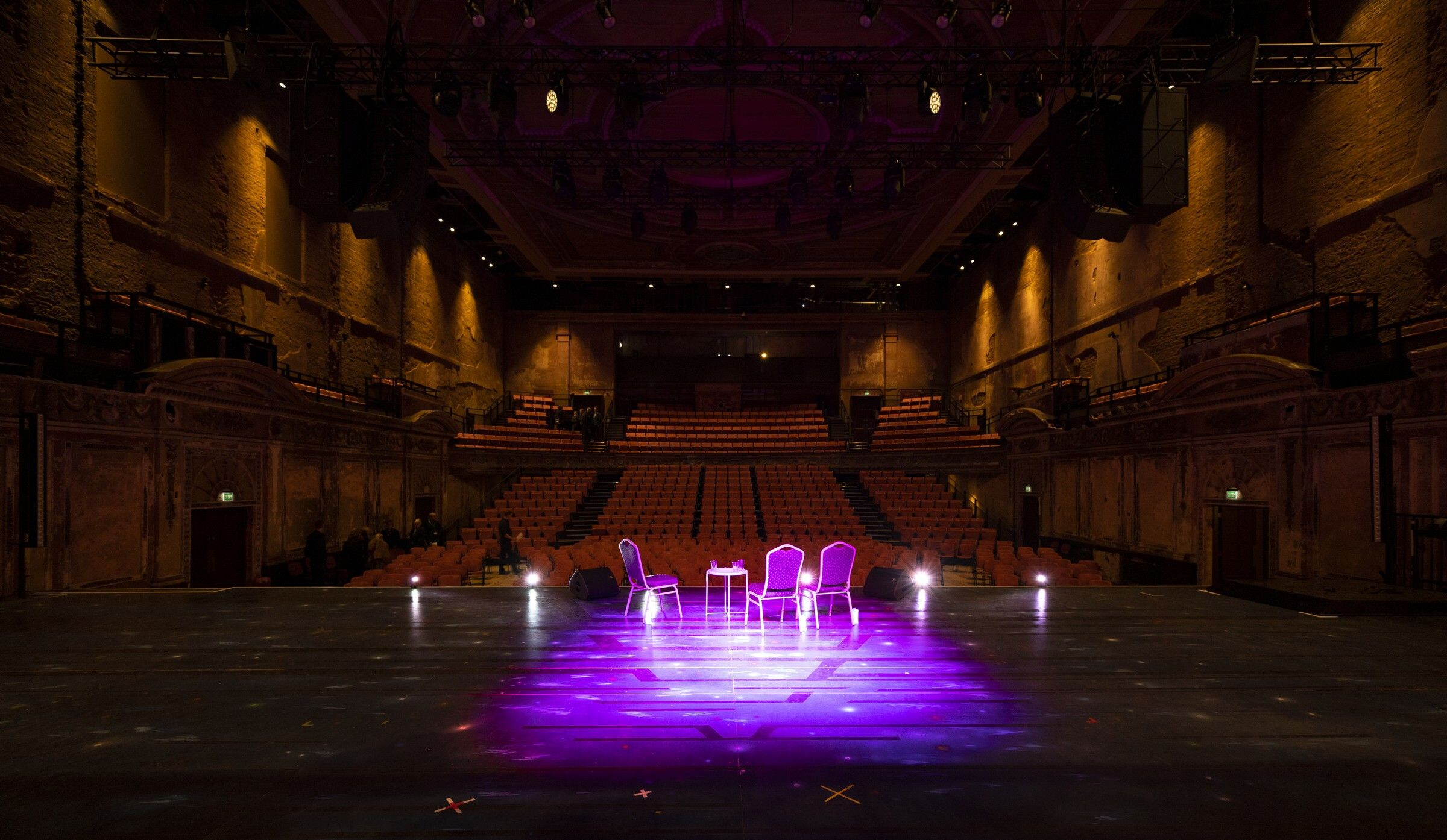
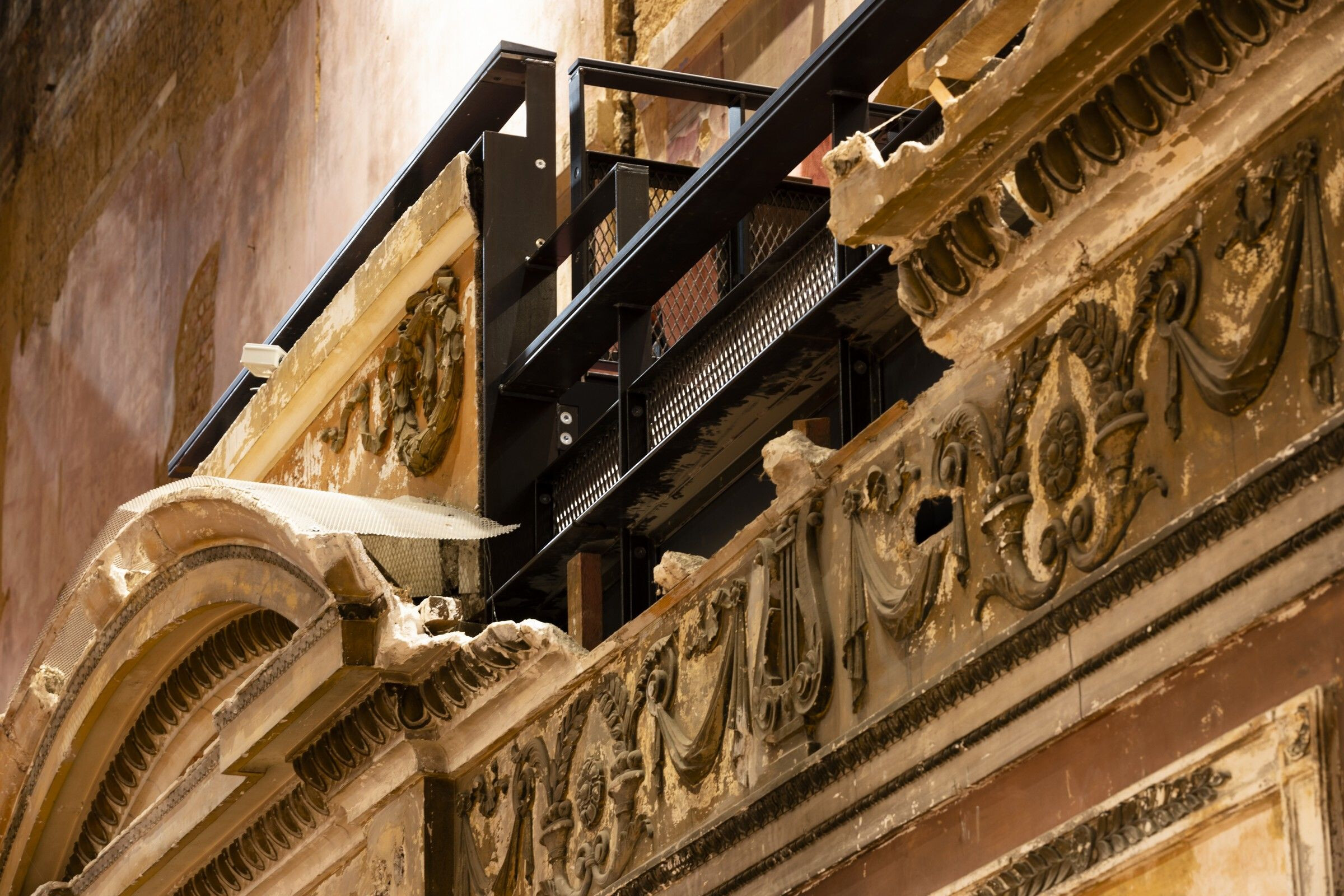
Elsewhere, the project has been about the exercise of restraint: of knowing when to stop, when to let the building speak for itself. This has been characterised as “arrested decay”; an approach of consolidation rather than restoration. In treating rooms as found spaces, the processes of deterioration have been addressed, elements that were unsafe or could not be viably repaired have been removed, added elements are legibly modern.
These additions are informed by the grand scale of the Victorian palace and the ambitions it represents, so are marked out by a scale and materiality that identifies them as new. At the same time, this is just one more layer added to many previous ones, another chapter in the history of Alexandra Palace.
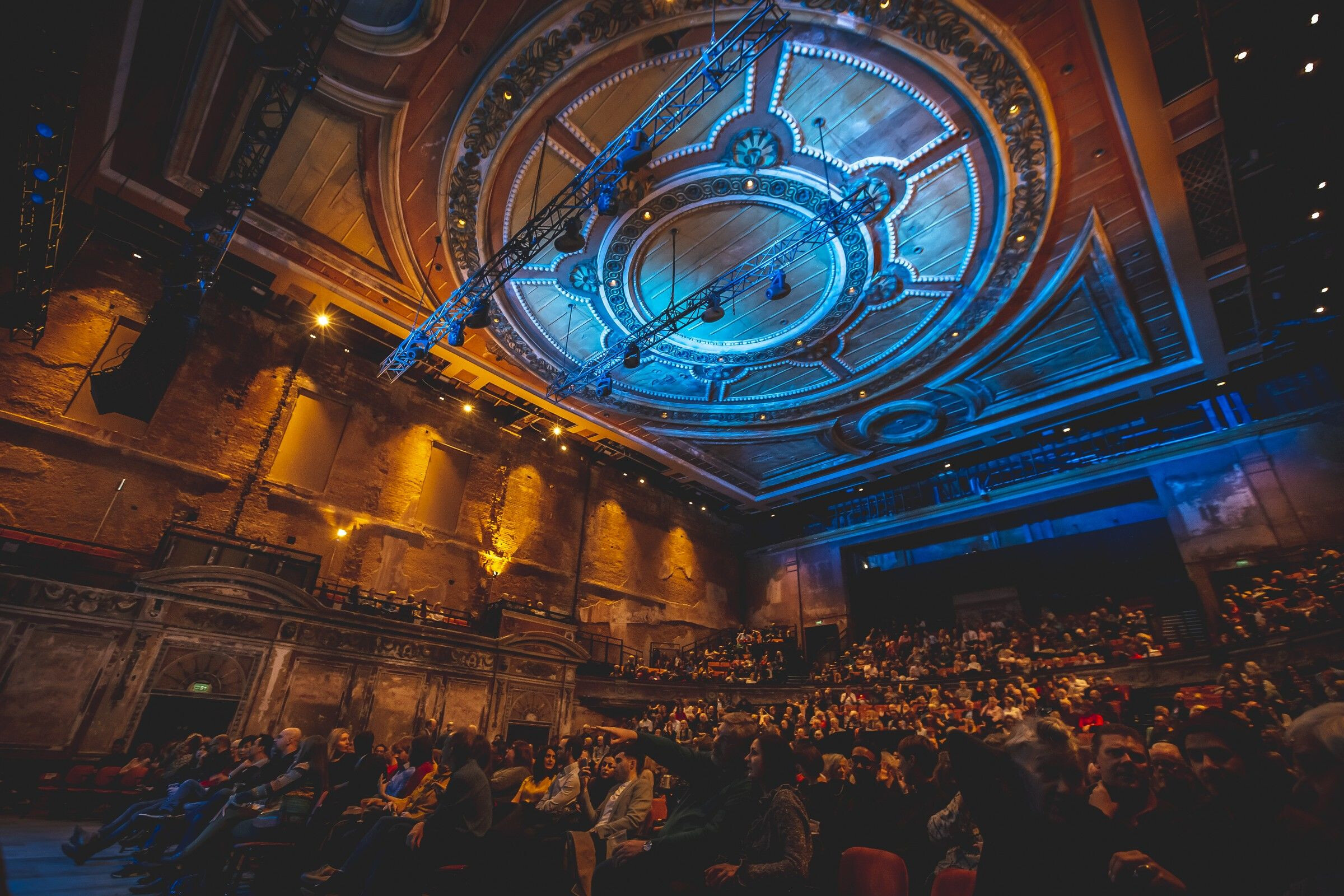
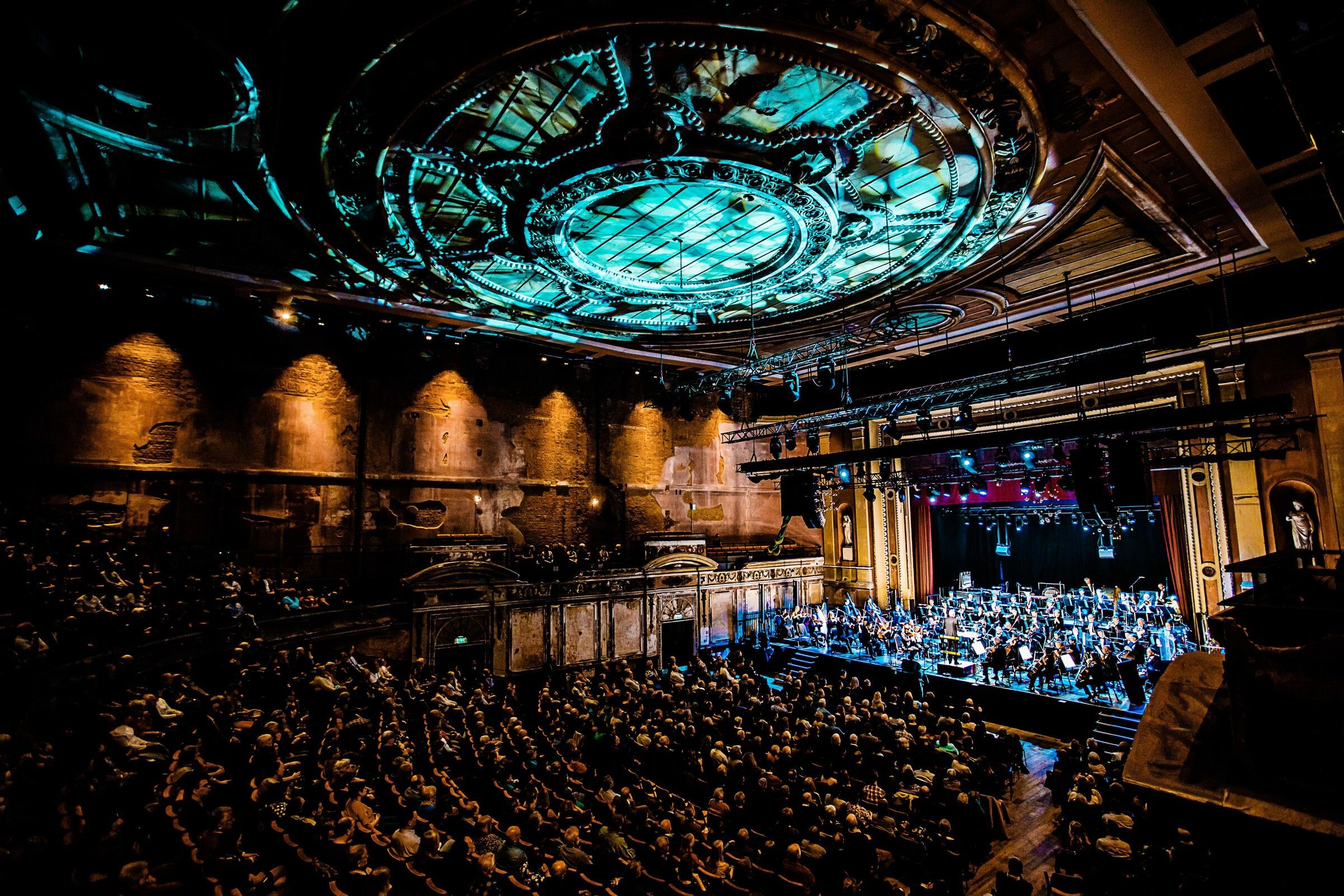
Team:
Architect: FCB Studios (Feilden Clegg Bradley Studios)
Client: Alexandra Palace
Structural Engineers: Alan Baxter & Associates
Theatre Design: Charcoalblue
Acoustics: Max Fordham
M&E: Max Fordham
Quantity Surveyors: Mott MacDonald
Surveyors: John Burke Associates
Fire Engineers: The Fire Surgery
Contractor: Willmott Dixon Construction
Artists for painted floor installation: Art and Believe
Subcontractors:
Internal joinery – stairs, panelling, doors: Suffolk & Essex Joinery
Architectural metalwork – stairs, balustrades: Wilcox Fabrications
Plaster repair & conservation: Stonewest
Masonry cleaning & repair: AVV solutions
Floor finishes: Horizontal
Internal joinery repair: Avi Contracts
Carpentry, timber floors: PMJ Construction
External joinery: Sash Window Conservation
Glazed metal doors & screens: Fineline
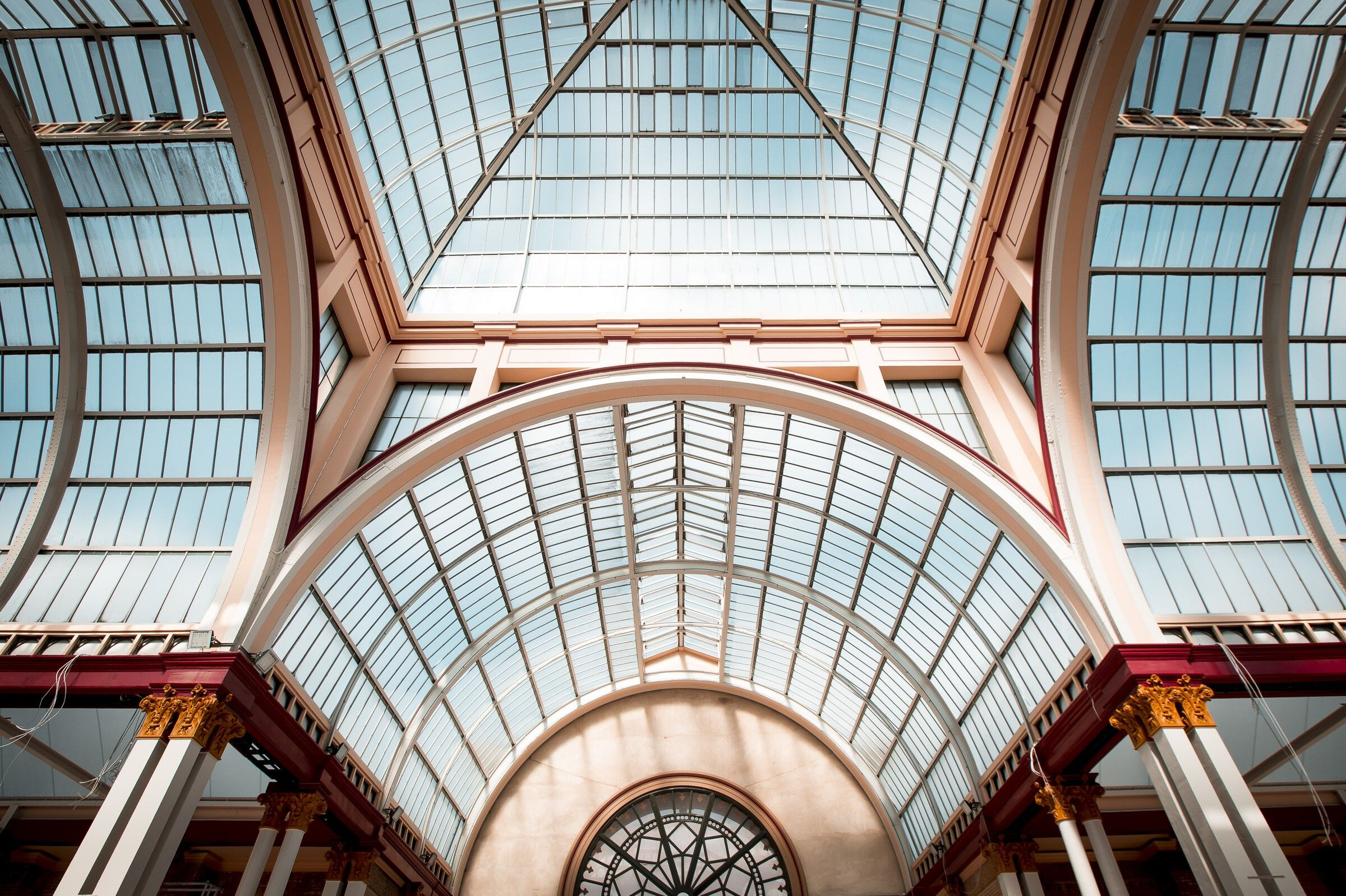
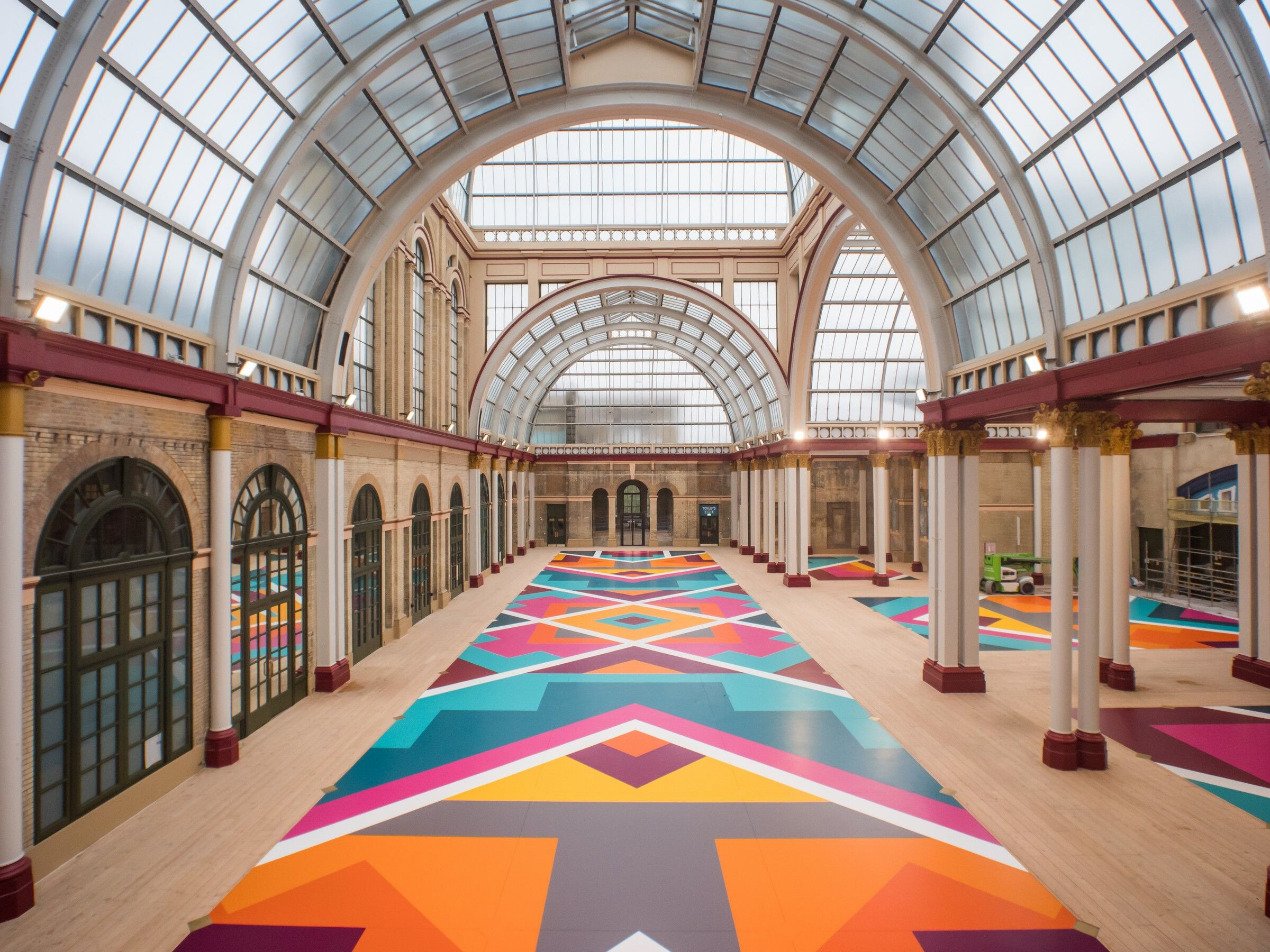
Material Used:
1. Door hardware: Allgood
2. Sanitaryware: Armitage Shanks (except Florida urinals by Shaws of Darwen)
3. Carpet (tiles): Desso
4. Through-pigmented MDF: Valchromat (Investwood)
5. Floor boxes & covers: Cableduct
6. Theatre seat fabric: Warwick
7. House curtain fabrics: Gerriets
8. Wall lining fabrics: J&C Joel
9. Wall and floor tiles: Johnsons Tiles
